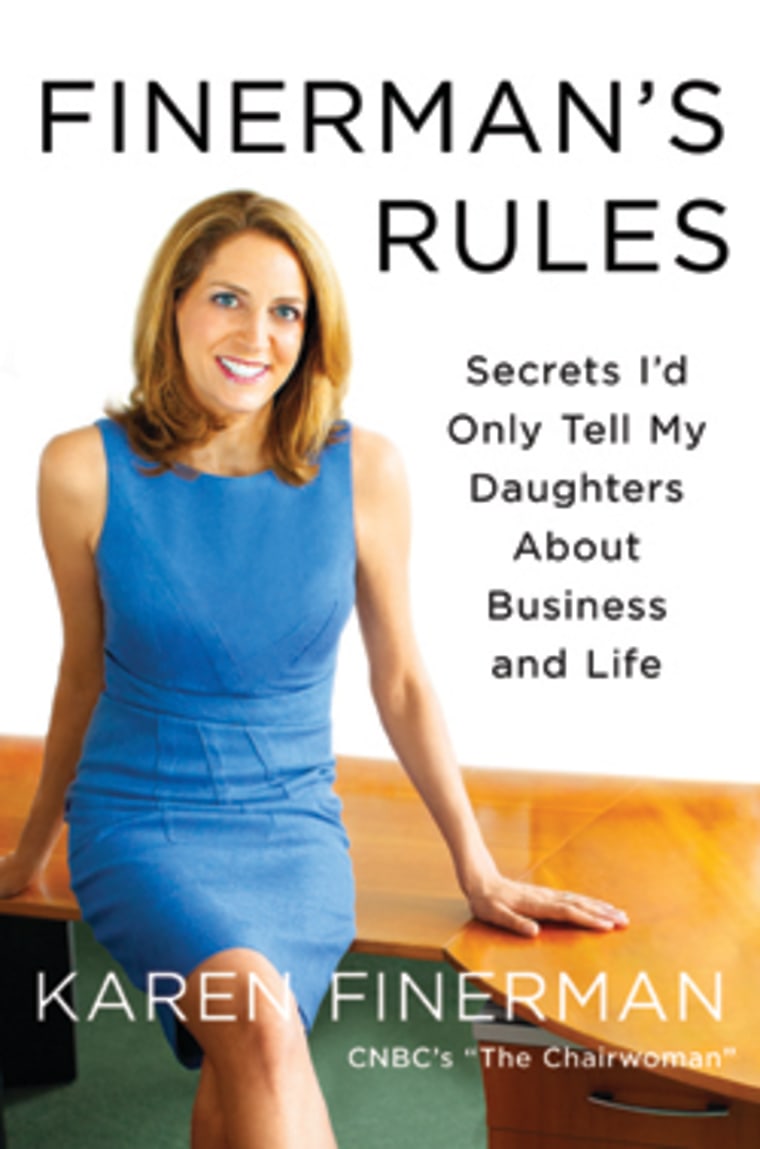Chapter 1
What Are Successful Girls Really Made Of?
I was raised a Calvinist. You might think you know what that means, but let me explain it the way my mother preached it to my three sisters and me back when we were at home: “I buy my girls Calvin Klein clothes, so that’s all they know. Then when they graduate from college, they have to figure out how to pay for them themselves.”
That’s it—that’s the philosophy. I can’t tell you how many people I meet who think Calvinism is something else entirely. It worked for us.
Wendy, the oldest, went on to be a movie producer of such films as The Devil Wears Prada, Stepmom, and Forrest Gump, for which she won an Oscar. Unlike many people in the movie business, Wendy knew no one to help her get started. Through sheer will, she managed to find a job working for Steve Tisch, the producer. And it was only through her relentless perseverance and ambition that she finally got the book Forrest Gump made into one of the most successful films of all time.
My brother Mark, the second oldest, was spared the Calvinist lecture. Yet he still managed to become a real estate financier of such success and renown that I can scarcely come across someone in the real estate business who doesn’t know him and tell me with a smile, “I love your brother.” After a brief career as a professional tennis player on the pro circuit, Mark realized he could teach others how to play tennis to make money, or he could learn business skills and teach himself how to make money.
He went from teaching a real estate king how to hit topspin to realizing he could be the real estate mogul himself, and he already knew how to play tennis. He became the right-hand man to two big real estate players, first at Nomura and then Credit Suisse, before becoming the number one man himself in the CMBS business (commercial mortgage-backed securities—don’t worry if you don’t know what that is), financing office towers and shopping malls— and he went higher from there. Yet he is still, at heart, the boy I grew up with. Even though he lives in a grown-up house in grown-up Greenwich, Connecticut, he’s like Tom Hanks in Big. Mark has every toy imaginable—cars, horses, pinball machines, tree houses, go-carts, vegetable gardens, an indoor basketball court, candy machines—and he still thinks cartoons are funny.
Then there’s me, the tomboy, nerd, and hedge fund cofounder.
And pulling up the rear—our two little sisters. First is Leslie, who followed my footsteps into finance after graduating from Berkeley and headed to Morgan Stanley. She then made the leap to become an analyst at a large credit hedge fund. Leslie recently took the road less traveled (in our family) and became a stay-at-home mom (for now). Leslie is the arbiter of cool in our family, the master of style. She can renovate an apartment and act as a general contractor even when nine months pregnant.
Last is Stacey, the youngest, maybe the smartest of us all, who was hired out of Wharton by Salomon Brothers, then got plucked away by RBS, and then after the 2008 market crash was hired by Goldman Sachs. After a breakup with a boyfriend, she decided to channel the energy left over after her day job to become a world-class Ironman competitor. She transformed herself into an extraordinary endurance machine. She doesn’t just focus on finishing in the allotted 17 hours. She’s looking to improve on her personal best of 12 hours, for the 2.4 mile swim, the 112 mile bike ride, and the 26.2 mile marathon.
Funnily, we all made our way from laid-back Southern California to New York City and its environs. It was here that we hoped we would find our success.
Instilling in her children her own brand of Calvinism, our mom didn’t subscribe to the Happiness-Is-a-Warm-Puppy, Free-to-Be-You-and-Me parenting styles that were so prevalent when we were growing up. I think she may have truly believed that being only warm and loving to your children conveyed that you accepted them as they were, as opposed to putting forth the effort to make them better. She always let us know that we could—and should—reach for more, with our academics, sports interests, and our ambitions. If you had asked my mother, “Would you rather your children be successful or happy?” she would have answered, without the slightest bit of hesitation, “Successful. How can you be happy if you’re not?”
Growing up, that message stuck with me. It was so imbedded in my thoughts that I don’t ever remember when I learned it. It just was. Any of my friends who spent time in our kitchen (the neighborhood meeting place) heard the same message. In the way other mothers would have said, “Did you get enough to eat?” or “Any crushes these days?” my mother would say to some of my seemingly less ambitious friends, “How are you going to support yourself with no plan?”
As a teenager, rather than setting myself on a course to pursue fame (quite common growing up in L.A., the entertainment capital of the world), happiness, fulfillment, and spiritual enlightenment (also quite common), I skipped right on to trying to be successful. Let’s just get on with it, I felt. “Onward” became my motto.
I wanted to get out in the world, have a great job, make my mark, and see how far I could go. And I wanted to make good on the philosophy my mother drilled into us with all the subtlety of a Lady Gaga performance. I got it loud and clear. I would need to succeed, and then I could possibly be happy.
Excerpted from the book FINERMAN’S RULES by Karen Finerman. © 2013 by Karen Finerman. Reprinted by permission of Business Plus. All rights reserved.
